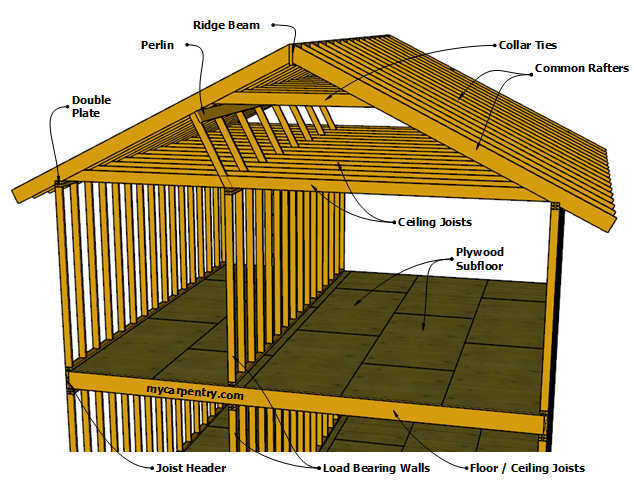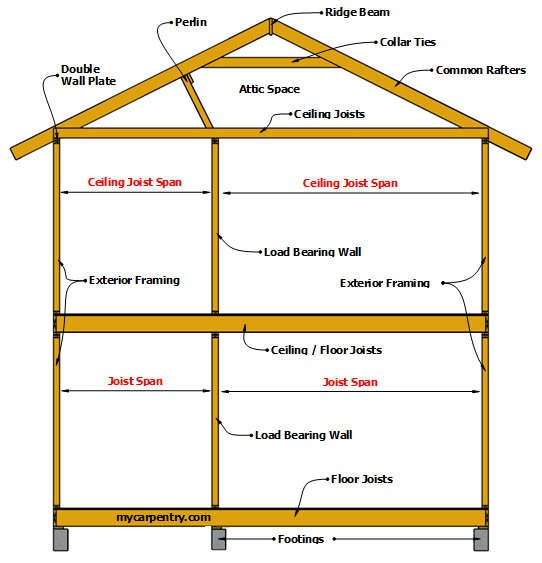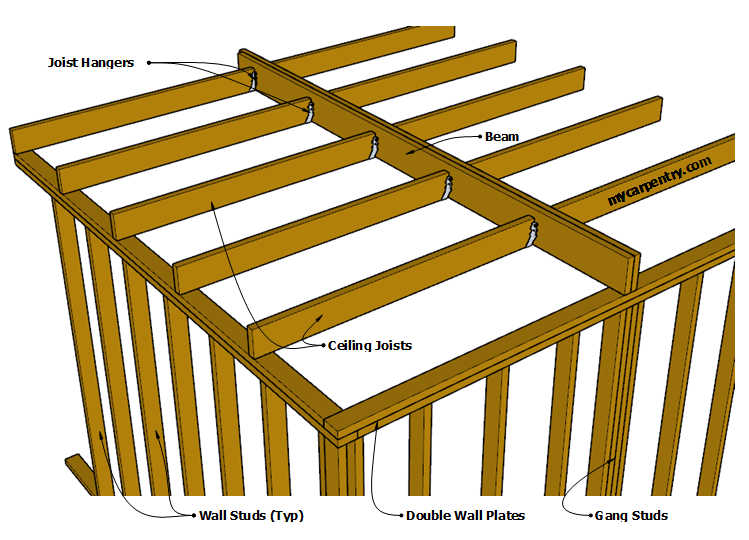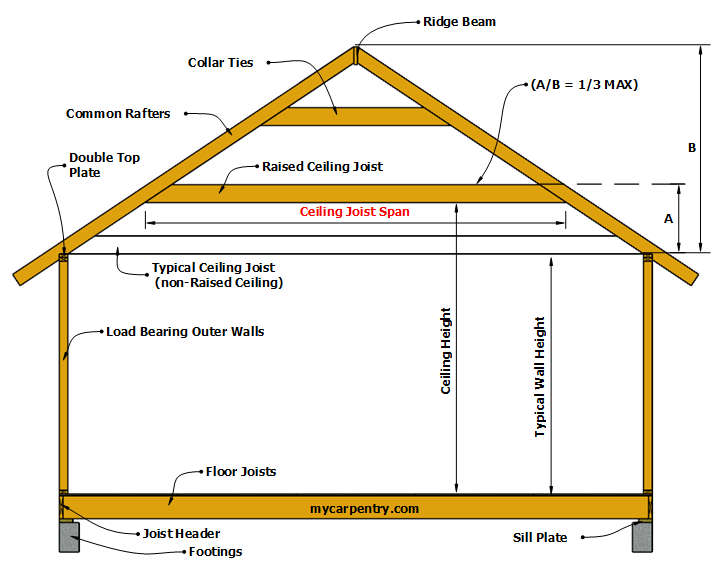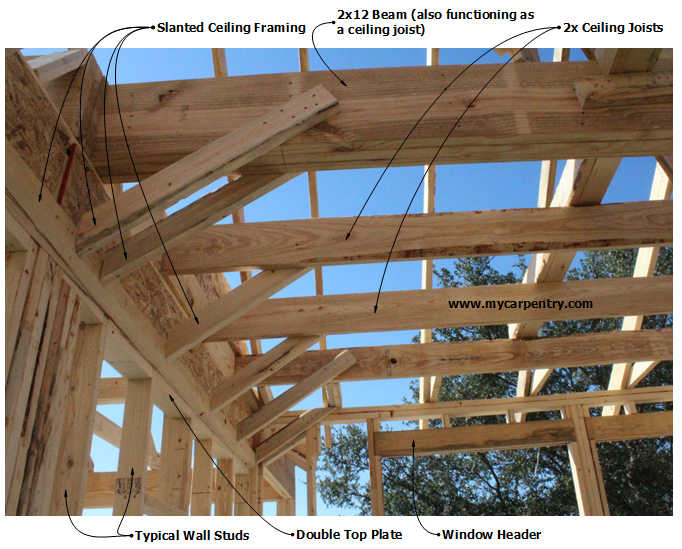Ceiling Joists
Ceiling Joists are structural framing members that support anything attached or mounted to the ceiling, including drywall or other finishes, light fixtures, air vents, smoke alarms, security cameras, fire sprinkler systems, etc.
View the Joist Span Tables
How to Determine Ceiling Joist Spans
On the attic level, the size and length of joists used for framing the ceiling depend on the design load measured in pounds per square foot (lbs/ft²), which is the dead load (weight of the ceiling's building materials) plus the live load of items stored in the attic. Typically, span tables for these joists are calculated based on a combination of live load (20 lbs/ft² plus a dead load of 10 lbs/ft²). See the Ceiling Joist Span Tables page for details.
On a typical two-story residential structure, the ceiling joists on the first floor also serve as floor joists on the second floor. The design load of the 1st-floor ceiling joists must include the second-level floor joist requirements.
Ceiling Framing - Using a Beam to Break up the Span
If you have a ceiling span that is too long for the materials available, you can reduce the span by placing a beam between bearing points or using interior load-bearing walls for vertical support. If an interior load-bearing wall has an opening, such as a doorway, include a load-bearing header to carry the weight across the span.
If you use a beam to break up the span between vertical supports, it must be capable of carrying the required ceiling/floor load of the structure. Joist hangers are needed where the joists butt-attach to the beam.
Framing a Raised Ceiling
In gable-type roof framing, ceiling joists should run parallel to the rafters so that the base of the rafters can be attached to the ends of the ceiling joists - this helps prevent the weight of the rafters from pushing out the outside walls.
You can raise the height of ceiling joists in an attic space so long as the elevation does not exceed 1/3 above the top of the outer walls (A) to the ridge beam (B). See the diagram below. As you raise the level of the ceiling joists in this scenario, the rafter span needs to be recalculated at every step (1/6, 1/5, 1/4, 1/3). See the 2021 IRC - Rafter Span Adjustment Factor for specific details.
Framing a Ceiling
There are many ways to frame ceilings, as there are for framing floors, walls, and roofs. For example, the diagram below shows how you can create a slant on the edge of a ceiling by adding some simple framing - this would be a good use for scrap material.
For building code information related to ceiling joists and rafters, check out the International Residential Code (IRC) website.
Floor Joist Span Tables - Determine the maximum joist spans for different species of lumber.
Ceiling Joist Span Tables - How to determine the maximum span of ceiling joists.
Framing a Floor - How to construct floors of a residential structure.
DIY Projects - Explore the DIY projects on mycarpentry.com.
What next?
Leave Ceiling Joists and return Home.


